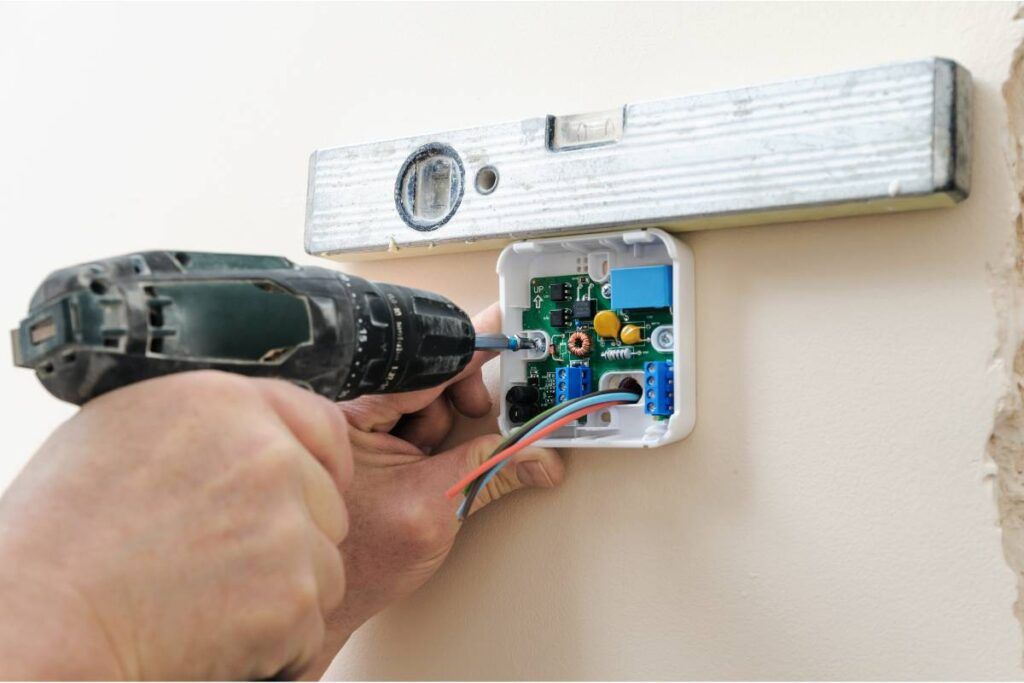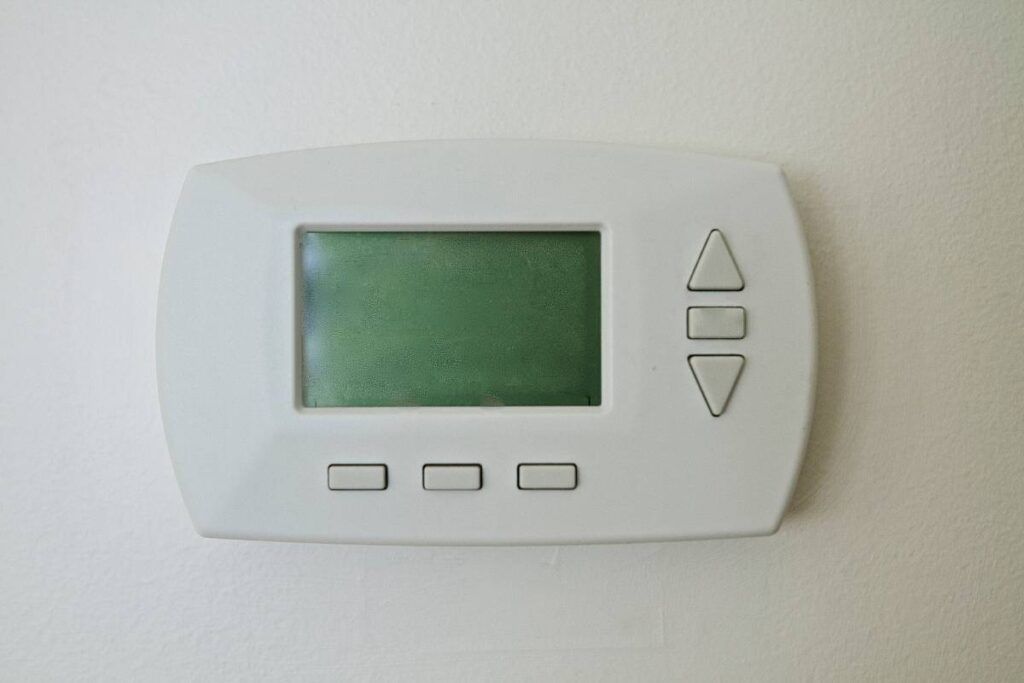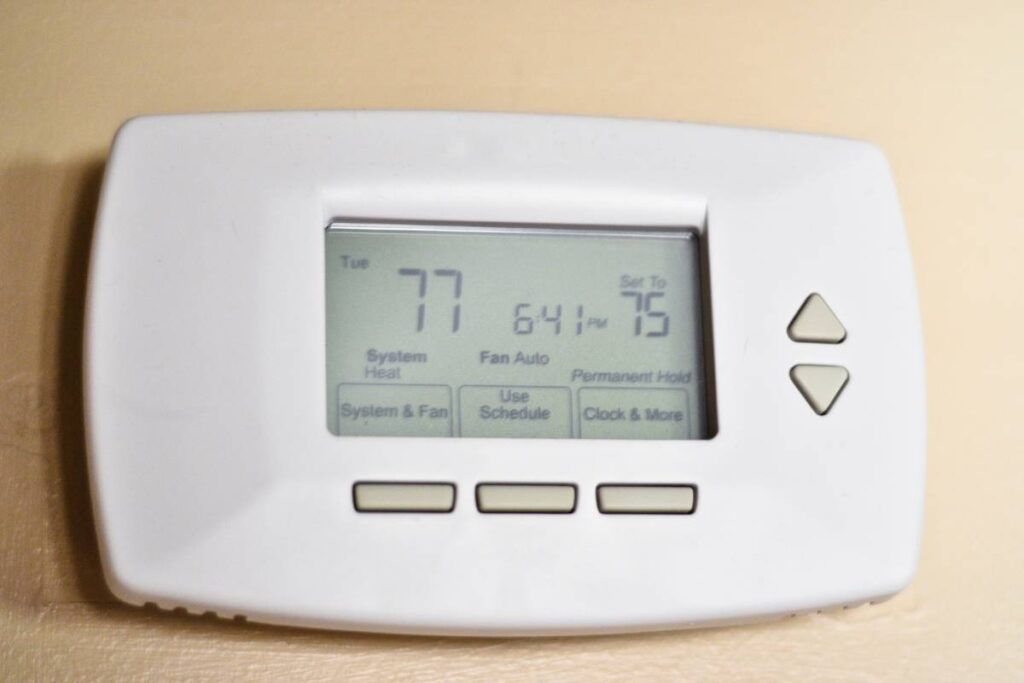When you are home, you expect a comfortable temperature. But it is frustrating to see it giving you wrong readings too often. What are the possible reasons behind a Honeywell thermostat showing wrong readings? That’s what we will share today.
Common reasons behind wrong readings in your Honeywell thermostat are wrong location or calibration, sensor problems, outdated firmware, wiring issues, or old thermostats. To fix it, find the right location, recalibrate well, update the firmware, fix the sensor issues, and correct the wire connections.
When your Honeywell thermostat shows incorrect reading, you must address the issue soon. If you are facing the same issue and searching for ways to troubleshoot it, this is the right place, as we have covered all the possible reasons and solutions.

Check out our list of top-handpicked products for all your electrical, appliance, and HVAC system needs to keep your home running smoothly.
This post includes some affiliate links.How does a thermostat work?
You will want a thermostat in your house for specific heating and cooling needs.
It senses the surrounding temperature and takes action to maintain the system’s temperature near a desired setpoint.
Nowadays, modern thermostats work with internet connections.
But the old thermostats did not need any such things.
The old thermostats contain a mercury switch inside. Also, there are 3 wires in the glass vials.
One wire is across the vial’s bottom, and the mercury remains in contact with the wire.
Another wire ends on the vial’s left side.
When the vial tilts left, the mercury makes contact between the wire and the one on the vial’s bottom.
The third wire ends on the vial’s right side. So when the vial tilts on the right, the mercury again makes contact between this wire and the bottom wire.
There are two thermometers –
- One is on the cover that displays the temperature.
- The other is on the top of the thermostat that controls the heating and cooling systems.
The thermostat is connected to your house’s central heating and cooling system.
It controls it by monitoring the temperature of the house.
This device further switches the central HVAC system on and off based on the room temperature and thermostat setting.
Setting a temperature in the thermostat sends signals to the heating and cooling systems, providing you with the desired temperature.
How accurate are Honeywell thermostats?
Most people will prefer a thermostat that offers accurate readings.
A Honeywell thermostat is one such device that can maintain accurate temperature and provide you with the correct readings.
Placing it in the central location of the house will encourage the device’s functionality to a great extent.
The temperature offset in the Honeywell thermostat is the feature that allows you to adjust the temperature reading by increasing or reducing 5°F.
It can be helpful if the old thermostats are in a slightly warm or cold location or if the temperature of your room is not ideal for you.
You can use the offset when you move out to a new home and need to adjust the temperature according to the room.
However, there will be times when your thermostat will mess up with the readings.
It will show you the wrong readings, and the common issues include:
- Wrong location
- Incorrect calibration and leveling
- Sensor problems
- Dirty thermostat and air filters
- Electrical and heat anticipator problems
- Outdated firmware
Let’s get to the bottom of these issues individually and see how we can solve them.
Also read:
12 Reasons Your Honeywell Thermostat Not Reading Temperature Correctly
Here are some possible problems and how can we fix them.
Location
Location is one of the most critical factors.
It needs to be at a place where the temperature matches the temperature of the rest of the house.
The wrong location can lead to wrong readings. Why? Here’s how.
Suppose you have kept the thermostat at a place where direct sunlight falls for a long time.
When the thermostat detects this temperature, it will not match the rest of your house.
The thermostat will give wrong signals to the heating system, further stopping it from producing enough heat.
As a result, you will feel chilled as before.
The air reaches the wires behind the thermostat to affect the readings.
The solution is to place the thermostat in a central location of the house.
This location’s temperature should match the temperature of the rest of the house and give you the correct readings.
Once you find the right location, ensure no drafts are nearby.
See the walls and windows for proper sealing.
Also, check the light and ensure the device does not receive too much light, as it can warm up the thermostat faster.
Set the thermostat at the right height, 5 feet above the ground.
Wrong level

Along with the location, you need to check the thermostat level.
Its alignment can affect the temperature reading accuracy, especially if you have an older mercury model.
The mercury does not work well if the thermostat leveling is incorrect.
As a result, you receive the wrong temperature readings.
Sometimes, the thermostat gets misaligned by mistake or was misaligned from the beginning only, and you did not notice.
If you have a round thermostat, remove the ring, check the clips near the upper area, and reset the level on top of them.
Keep tweaking the thermostat’s position until the level is aligned correctly.
Older thermostats get badly affected more than digital thermostats.
Wrong calibration
Wrong calibration can also lead to incorrect readings.
For example, if the room temperature is 72°F, the thermostat shows 76°F when you calibrate it wrong.
So, the thermostat sends a wrong signal to the HVAC system, for which you do not receive a comfortable temperature.
To calibrate it, buy an accurate tube-style thermometer and place it near the thermostat.
Note the reading in both the thermometer and the device.
Adjust the calibration to negative if the thermostat reads 4 degrees warmer than the thermometer’s reading.
If it is 4 degrees cooler, adjust it to 4 degrees in the positive.
Sensor issues
When the thermostat sensor is broken or faulty, it leads to wrong readings.
The sensor helps the device to detect and track the temperature of the surrounding areas.
So, when the Honeywell thermostat does not give the right temperature, check the sensor once.
If the sensor is broken or faulty, call a professional to replace it immediately or replace the Honeywell thermostat.
Make sure that the sensor is compatible with the Honeywell thermostat.
Dirty thermostat

An incorrect temperature comes from a dirty thermostat or the sensor.
The vents get blocked with dirt and debris when the device is dirty.
It further makes the inside of the device too warm where the sensor is present.
So, when this happens, the warmth inside the device and near the sensor detects the wrong temperature and displays a higher-than-normal temperature.
Open and vacuum-clean the thermostat and the sensor regularly.
Or, you can gently blow out the inside with canned air.
Use a brush gently to bring out the remaining dirt from the inside.
If the thermostat is in a dirty place, clean it more often.
Try to keep the thermostat in a clean, central location and make a habit of cleaning it regularly occasionally.
Dirty air filters
Another common reason that leads to wrong thermostat readings is dirty air filters.
In this case, the thermostat is not at fault but the HVAC system.
When the HVAC system filters are too dirty, they trap the air inside, fail to deliver enough air outside, and the thermostat starts showing false readings.
To fix the false readings and improve the thermostat’s functionality, you need to change the filter of your HVAC system regularly every 3-4 months.
Wrong thermostat settings
The wrong setting in the thermostat will also lead to incorrect readings.
For example, if you have set the thermostat to heat during the winter, it will give you warm air.
Ensure you have the correct settings to either COOL or HEAT and that the fan is not on.
The best method is to change the setting to AUTO. It will change the thermostat’s preference automatically by detecting the surrounding temperature.
Wiring issues

Loose wire connections are one of the main reasons behind wrong thermostat readings.
Too much heat gets gathered inside and around the thermostat when the wire is loose.
It can further meddle with the thermostat readings, leading to wrong temperature readings.
Turn off the breaker and the thermostat, open the thermostat cover plate, and check the wire connections.
If you find any loose connections, immediately tighten them.
Also, check whether the wires are connected to the suitable terminals, especially the heating and cooling ones.
Sometimes wrong wiring, for example, W and Y wires reversed, can lead to wrong readings.
This setting can run the cooling stage when the thermostat is signaled for heat.
After you check the thermostat’s wiring, check for the HVAC too.
If needed, call a professional for help.
Also read: What Happens If You Wire A Thermostat Wrong?
Heat anticipator
The heat anticipator in the thermostat should be set correctly.
Improper settings can lead to incorrect thermostat readings.
Heat anticipators are primarily found in older thermostats.
Digital thermostats do not have these anticipators.
The anticipator’s job is to give your house enough warm temperature during the colder times.
So, you will rarely need to adjust its temperature.
If the heat anticipator is burnt out, you may need to fix it or get a new thermostat.
To fix a heat anticipator:
- Turn off the breaker and remove the thermostat cover.
- Locate the anticipator at the thermostat’s center. It will have LONGER or LONGER CYCLES mentioned.
- If the thermostat shows the wrong readings or fluctuates, move the adjustment lever away from the LONGER setting by one calibration mark.
- Once you have set the heat anticipator, check it by turning on the HVAC system.
- If the problem remains, call a professional or get a new thermostat.
Electrical issues
If your Honeywell thermostat shows inaccurate readings, some electrical issues, like voltage fluctuations, have occurred.
The thermostat works better with stable electricity to detect the actual temperature around it and give you the desired room temperature through the HVAC systems.
Unstable electricity or frequent fluctuations will disturb the thermostat’s detection and lead to wrong readings.
In such cases, you must check for the voltage, reset the thermostat, or call a professional for help.
Another problem is static electricity which can freeze the digital thermostat touchscreen.
After this, the device no longer updates any data. Even if it does, it provides wrong information.
No matter how much the difference between the room temperature and the thermostat’s set temperature is, the HVAC keeps running.
When this happens, turn off the thermostat power, unsnap it for 10-20 seconds, and turn it back on.
Doing this will power cycle the thermostat and reboot it for the correct readings.
Also read: 11 Reasons Why Your Honeywell Thermostat Is Blank
Firmware updates
The digital Honeywell thermostats will need to have updated firmware for proper functioning.
Outdated firmware will give you wrong readings and interfere with the internet connection.
Since digital thermostats work best on an uninterrupted network, unstable internet connections lead to wrong readings.
So, make sure your thermostats have updated firmware.
To update the firmware in a Honeywell thermostat:
- Open the thermostat app on your mobile phone.
- Go to the FIRMWARE tab.
- Click SCAN FOR UPDATES and wait for the checker to check for updates.
- The updated version will pop up on the screen if there is any update.
- Click on DOWNLOAD and install the updated firmware version.
- Check your thermostat reading after that.
Also read: 9 Reasons Your Honeywell Thermostat Not Turning On
The thermostat is too old

Since the thermostat is an appliance, it will become old and wear out over time like the other appliances.
So, when that happens, the thermostat malfunctions, beginning with wrong readings.
When it becomes old, the inner parts of the device become weak and cannot correctly detect the surrounding temperature.
As a result, you will often see inaccurate readings in it.
There is no way, in this case, to reverse the issue.
The only way out is to replace the thermostat with a new one.
Also, the new thermostats have energy-saving features, which will help get low energy bills.
Final words
Most Honeywell thermostats will show accurate readings. But if it doesn’t, there are some serious issues, and you must address them quickly.
Make sure you align the thermostat at the proper level, calibrate it properly, keep it at the central location of your house, set it correctly, clean the device and the dirty air filters regularly, connect the wires correctly and tightly, and keep the firmware updated. These simple steps should save maximum issues.
If they don’t, look out and troubleshoot the other problems like sensor issues, faulty heat anticipator, and electrical issues, or call an expert. Replace the thermostat if the repair does not work.
How do I reset my Honeywell thermostat?
To reset the thermostat, switch off the device and the breaker and turn it on again after 30 seconds. There are other methods, but this is easy and works best for most Honeywell models.
Will Honeywell thermostats go bad?
Eventually, all appliances go bad, and Honeywell thermostats are no exception. After 10 to 15 years of usage, they become old, wear out, and malfunction. So, before it messes up with the house’s HVAC, replace it with a new one.
How often do you change the batteries?
In a Honeywell thermostat, change the batteries every 10 months or once a year.
Reference: Thermostat Wikipedia
